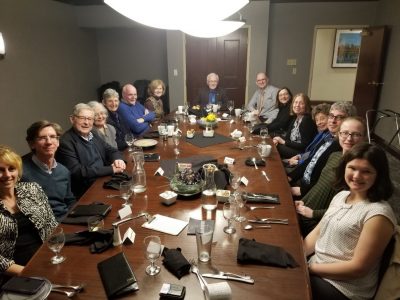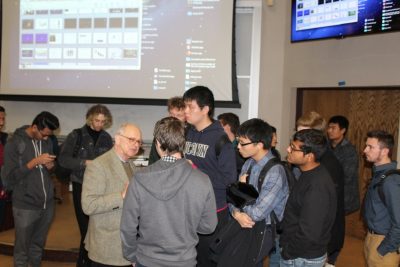The University of Connecticut, Department of Physics, is proud to announce the 27th Annual Katzenstein Distinguished Lecturer on Friday, January 30th , 2026 by Professor Pablo Jarillo-Herrero.
Pablo Jarillo-Herrero is a Cecil and Ida Green Professor of Physics at the Massachusetts Institute of Technology and a member of the US National Academy of Sciences. He received his “Licenciatura” in physics from the University of Valencia, Spain, in 1999, M.Sc. degree at the University of California in San Diego, in 2001 and Ph.D. at the Delft University of Technology in The Netherlands in 2005. His research involves studying the properties of two-dimensional (one atom-thick) materials with special emphasis on investigating their superconducting, magnetic, and topological properties. The discovery of superconductivity in twisted bilayers of graphene by his group in 2018 has been recognized as the Breakthrough of the Year by the Physics World magazine.
Prof. Jarillo-Herrero is the recipient of the APS 2020 Oliver E. Buckley Condensed Matter Physics Prize and the 2020 Wolf Prize in Physics for his research on twisted bilayer graphene. Many groups all over the world have adopted Prof. Jarillo-Herrero’s approach and ideas to discover numerous previously unknown phases of matter in twisted multilayers of graphene and other two-dimensional materials, launching the rapidly growing field of “twistronics”. His accomplishments have been recognized with a number of other awards, including a Presidential Early Career Award for Scientists and Engineers in 2012, the 2021 Lise Meitner Distinguished Lecture and Medal, the 2021 Max Planck Humboldt Research Award, and the 2021 US National Academy of Sciences Award for Scientific Discovery.
For more details of the lecture please see the Web Calendar post.
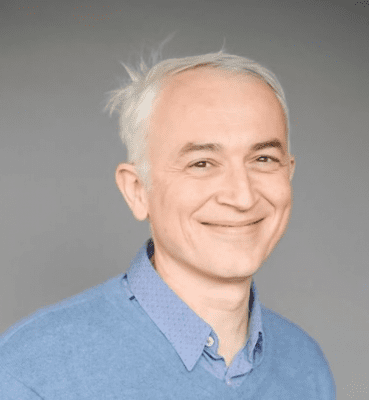 Prof. Vladan Vuletić, Lester Wolfe Professor of Physics at MIT, is a leading figure in atomic, molecular, and optical physics, with pioneering contributions to quantum science and technology. Born in Peć, Serbia (then Yugoslavia), and educated in Germany. In 1992, he earned his Physics Diploma with highest honors from the Ludwig-Maximilians-Universität München, and in 1997, a Ph.D. in Physics (summa cum laude). He then conducted postdoctoral research with Nobel Laureate Steven Chu at Stanford University as a Lynen Fellow of the Humboldt Foundation. After faculty appointments at Stanford and MIT, he rose to the rank of Full Professor at MIT in 2011. Vuletic is Director of the MIT-Harvard Center for Ultracold Atoms and Chair of the Division of Atomic, Molecular, and Optical Science of the American Physical Society.
Prof. Vladan Vuletić, Lester Wolfe Professor of Physics at MIT, is a leading figure in atomic, molecular, and optical physics, with pioneering contributions to quantum science and technology. Born in Peć, Serbia (then Yugoslavia), and educated in Germany. In 1992, he earned his Physics Diploma with highest honors from the Ludwig-Maximilians-Universität München, and in 1997, a Ph.D. in Physics (summa cum laude). He then conducted postdoctoral research with Nobel Laureate Steven Chu at Stanford University as a Lynen Fellow of the Humboldt Foundation. After faculty appointments at Stanford and MIT, he rose to the rank of Full Professor at MIT in 2011. Vuletic is Director of the MIT-Harvard Center for Ultracold Atoms and Chair of the Division of Atomic, Molecular, and Optical Science of the American Physical Society.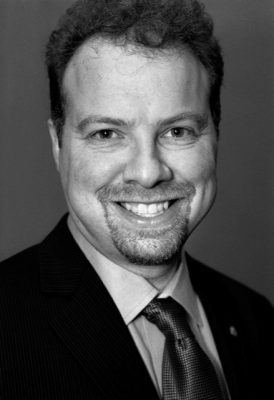 Adam Riess is a Bloomberg Distinguished Professor, the Thomas J. Barber Professor in Space Studies at the Krieger School of Arts and Sciences at Johns Hopkins University, a distinguished astronomer at the Space Telescope Science Institute and a member of the National Academy of Sciences. He received his bachelor’s degree in physics from the Massachusetts Institute of Technology in 1992 and his PhD from Harvard University in 1996. His research involves measurements of the cosmological framework with supernovae (exploding stars) and Cepheids (pulsating stars). Currently, he leads the SHOES Team in efforts to improve the measurement of the Hubble Constant and the Higher-z Team to find and measure the most distant type Ia supernovae known to probe the origin of cosmic acceleration.
Adam Riess is a Bloomberg Distinguished Professor, the Thomas J. Barber Professor in Space Studies at the Krieger School of Arts and Sciences at Johns Hopkins University, a distinguished astronomer at the Space Telescope Science Institute and a member of the National Academy of Sciences. He received his bachelor’s degree in physics from the Massachusetts Institute of Technology in 1992 and his PhD from Harvard University in 1996. His research involves measurements of the cosmological framework with supernovae (exploding stars) and Cepheids (pulsating stars). Currently, he leads the SHOES Team in efforts to improve the measurement of the Hubble Constant and the Higher-z Team to find and measure the most distant type Ia supernovae known to probe the origin of cosmic acceleration.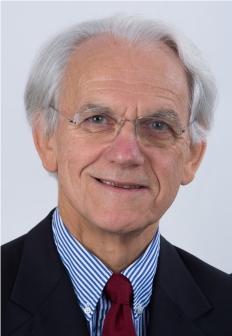 Gérard Mourou received his undergraduate education at the University of Grenoble (1967) and his Ph.D. from University Paris VI in 1973. He has made numerous contributions to the field of ultrafast lasers, high-speed electronics, and medicine. But, his most important invention, demonstrated with his student Donna Strickland while at the University of Rochester (N.Y.), is the laser amplification technique known as Chirped Pulse Amplification (CPA), universally used today. CPA revolutionized the field of optics, opening new branches like attosecond pulse generation, Nonlinear QED, and compact particle accelerators. It extended the field of optics to nuclear and particle physics. In 2005, Prof. Mourou proposed a new infrastructure, the Extreme Light Infrastructure (ELI), which is distributed over three pillars located in the Czech Republic, Romania, and Hungary. Prof. Mourou also pioneered the field of femtosecond ophthalmology that relies on a CPA femtosecond laser for precise myopia corrections and corneal transplants. Over a million such procedures are now performed annually. Prof. Mourou is a member of the U.S. National Academy of Engineering, and a foreign member of the Russian Science Academy, the Austrian Sciences Academy, and the Lombardy Academy for Sciences and Letters. He is Chevalier de la Légion d’honneur.
Gérard Mourou received his undergraduate education at the University of Grenoble (1967) and his Ph.D. from University Paris VI in 1973. He has made numerous contributions to the field of ultrafast lasers, high-speed electronics, and medicine. But, his most important invention, demonstrated with his student Donna Strickland while at the University of Rochester (N.Y.), is the laser amplification technique known as Chirped Pulse Amplification (CPA), universally used today. CPA revolutionized the field of optics, opening new branches like attosecond pulse generation, Nonlinear QED, and compact particle accelerators. It extended the field of optics to nuclear and particle physics. In 2005, Prof. Mourou proposed a new infrastructure, the Extreme Light Infrastructure (ELI), which is distributed over three pillars located in the Czech Republic, Romania, and Hungary. Prof. Mourou also pioneered the field of femtosecond ophthalmology that relies on a CPA femtosecond laser for precise myopia corrections and corneal transplants. Over a million such procedures are now performed annually. Prof. Mourou is a member of the U.S. National Academy of Engineering, and a foreign member of the Russian Science Academy, the Austrian Sciences Academy, and the Lombardy Academy for Sciences and Letters. He is Chevalier de la Légion d’honneur.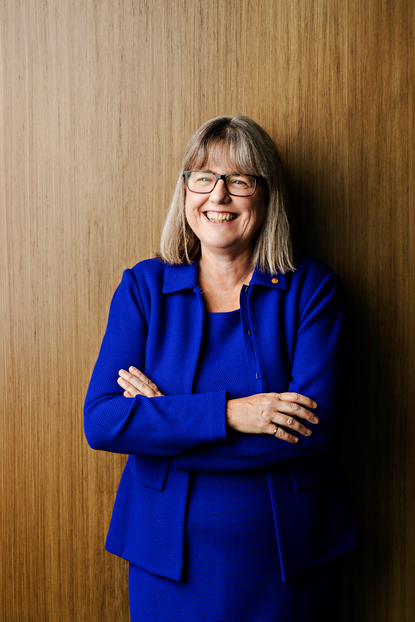 Prof. Strickland is one of the recipients of the 2018 Nobel Prize in Physics for developing
Prof. Strickland is one of the recipients of the 2018 Nobel Prize in Physics for developing 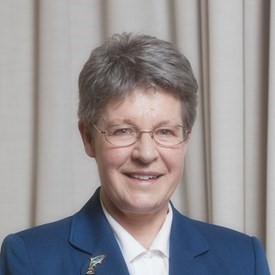 (pictured at left) is world-famous for her discovery of pulsars in 1967. Pulsars are a special type of neutron star, the rotating dense remnant of a massive star. Pulsars have highly magnetic surfaces and emit a beam of electromagnetic radiation along their poles. This beam of light moves into and out of our line-of-sight at quick, constant intervals, appearing as a regular “pulse” of light.
(pictured at left) is world-famous for her discovery of pulsars in 1967. Pulsars are a special type of neutron star, the rotating dense remnant of a massive star. Pulsars have highly magnetic surfaces and emit a beam of electromagnetic radiation along their poles. This beam of light moves into and out of our line-of-sight at quick, constant intervals, appearing as a regular “pulse” of light.